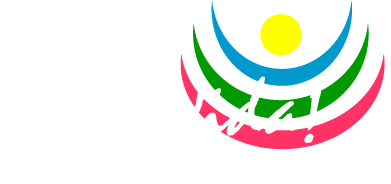Que varas con los Ticos!
- Chantal Bingham

- Oct 3, 2021
- 4 min read
Updated: Nov 21, 2022
WHY DO WE TICOS "GRIP THE ROD"?
-Did you see, did that man die?
-How ugly! What happened?
-Diay, I don't know, le dió una vara rara!.
-Compita, I'll sell you this chain, pure gold.
-More fake than a three colones bill. Stop beating around the bush!
-o0o-
The tico does not lie, he says varas; the tico does not get sick, they grab sticks from him; the tico does not exaggerate, he grabs the stick; the tico does not decompose, he grabbed a stick; the tico is not stupid, he gives him the stick; the tico is not afraid, he gets on his feet.
For Costa Ricans, the word "vara" is synonymous with exaggeration, nonsense, a lie, but above all, deception.
Why do we use this word in such a standardized way that it is practically an indispensable catchphrase in Costa Rican speech?
Let's put a brake on the course of history and set back many, many years ago, back in the early nineteenth century, when Costa Rica was just a small and backward province of the Captaincy General of Guatemala.
We were so backward that it was said that the Spanish came to our land who did not achieve anything from the conquest and the colony, and they had no choice but to settle for a very small land, almost without gold, silver or other minerals that were worth. worth it, with a very irregular relief.
To add insult to injury, in addition to being the poorest and most backward, we were the least populated province, so we did not represent much for the Captaincy General, less for the Viceroyalty of New Spain (Mexico), not to mention for the crown Spanish.
Those were times when even the governor of the province had to plant his own garden in order to feed his family.
In those times, our country did not have even the most basic tools for work and farming, it lacked everything, even things like dishes and pots were considered an unattainable luxury.
To measure hands, feet, arms were used, and to weigh rough sticks were used as scales and stones from the street were gathered to be used as weights.
Independence came in 1821 and the Central American provinces, between successive civil wars, coups d'état, barracks and riots, appointed and overthrew -one after another- generals and colonels.
Our ancestors, aware of the backwardness, poverty and remoteness of our province, knew how to understand that here there was nothing to fight for, that the only thing left was to get to work and make all the necessary efforts to get our Costa Rica out of the barreal he was in. That was why they named as our first Head of State, a humble, but wise school teacher: Don Juan Mora Fernández.
In 1849, he was elected President of the Republic, the National Hero and Liberator of our Homeland, Mr. Juan Rafael Mora Porras, Don Juanito for his people.
We recognize Don Juanito as one of the greatest heroes of our Homeland, Liberator of Costa Rica and Central America and the maximum leader of the glorious heroic deed of the National Campaign of 1856, against the invading yoke of the North American filibuster. This feat was so great and heroic, that it overshadowed other great works that he performed on behalf of his people.
For example, it was Don Juanito the President who was interested in Costa Rica having a fair and equitable system of weights and measures, in accordance with international guidelines, and that it be used throughout the country.
This is how he officially adopted the system of weights and measures, which was used in European countries, especially Spain and Portugal and the United States:
- To weigh, the ounce, the pound, the arroba and the quintal were used.
- for capacity, the hull glass, the bottle, the gallon, the pint and the barrel would be used;
- to measure, the inch, the foot, the yard and the rod would be used.
Well, a yard is the equivalent of 91 centimeters, while a yard is equivalent to 84 centimeters; that is, a stick is 7 centimeters shorter than a yard.
The yard was to measure fabrics, while the rod was used to calculate distances and surfaces; that is, to measure streets and lots.
For this reason, the four cities of the Central Valley provinces were traced their streets and avenues in sticks. Each block in Alajuela, San José, Heredia and Cartago, measures 100 yards and not 100 meters. We say meters because in the 70s of the 20th century, in the presidency of Lic. Daniel Oduber, the decimal metric system was adopted as official; Of course, based on this provision, in any new development that is developed, its blocks must measure at least 100 meters. But that is another story.
Going back to our original topic, there were merchants who wanted to be slick, not to mention liars and scoundrels, who pretended to sell cloth to their clients, measuring with rods, but charging like yards.
This aroused great mistrust among the population at that time.
And since then, it is that there is the custom, among the Ticos, of "grabbing the stick" of saying "stick" to everything that is foolish, exaggerated, lies, swindles, or deception.
The next time you ask for an address and they give it to you in meters, remember that that ... is "Pura vara".
anonymous comment sent to my WhatsApp
You might also be interested in: Costa Rica vs Canada: The Definitive Game









Yorumlar